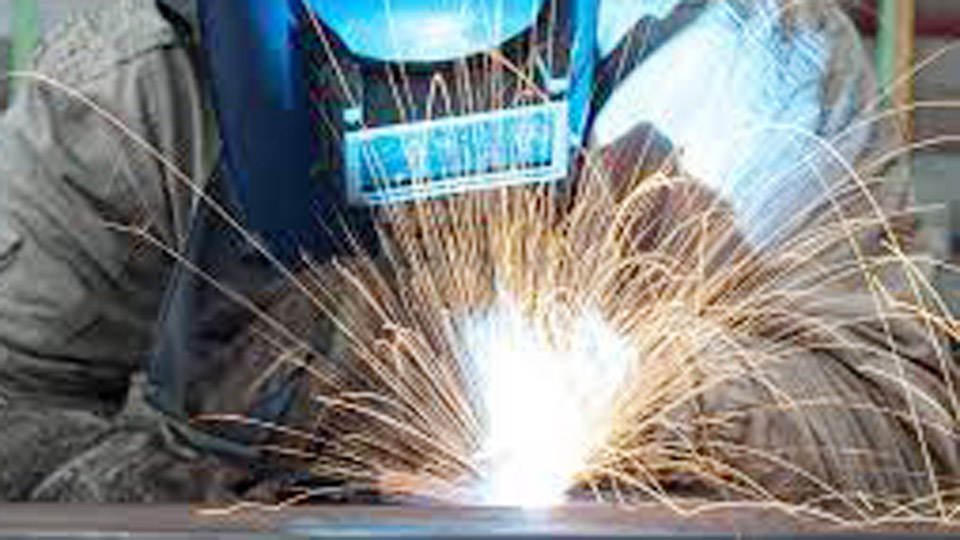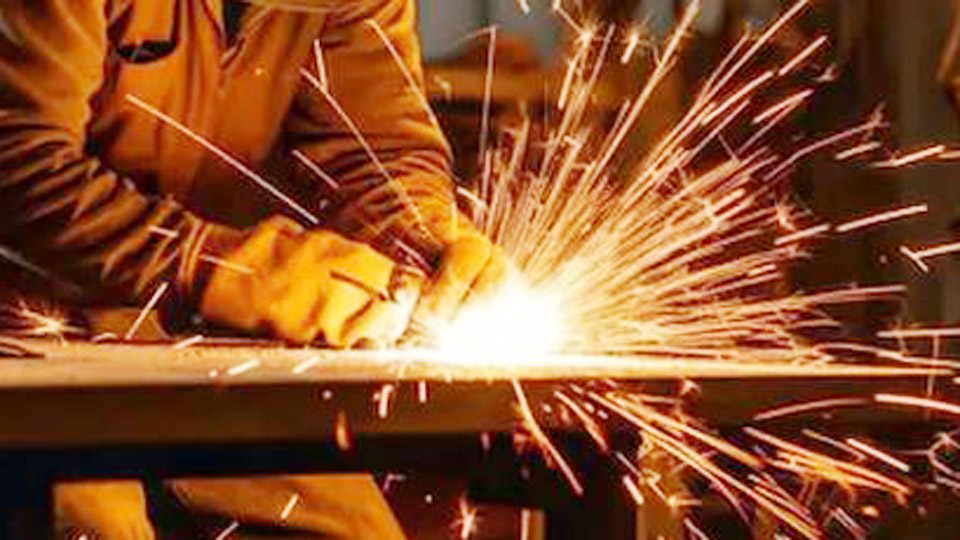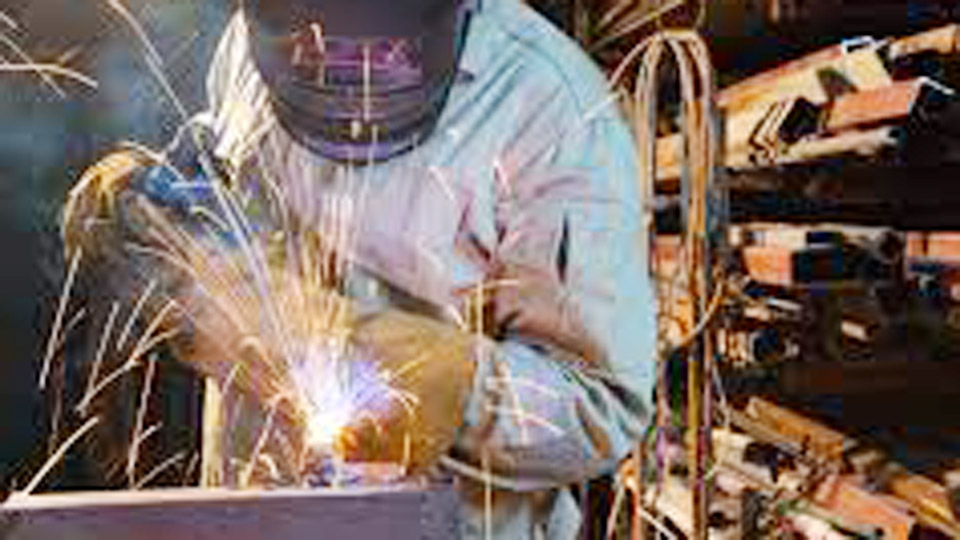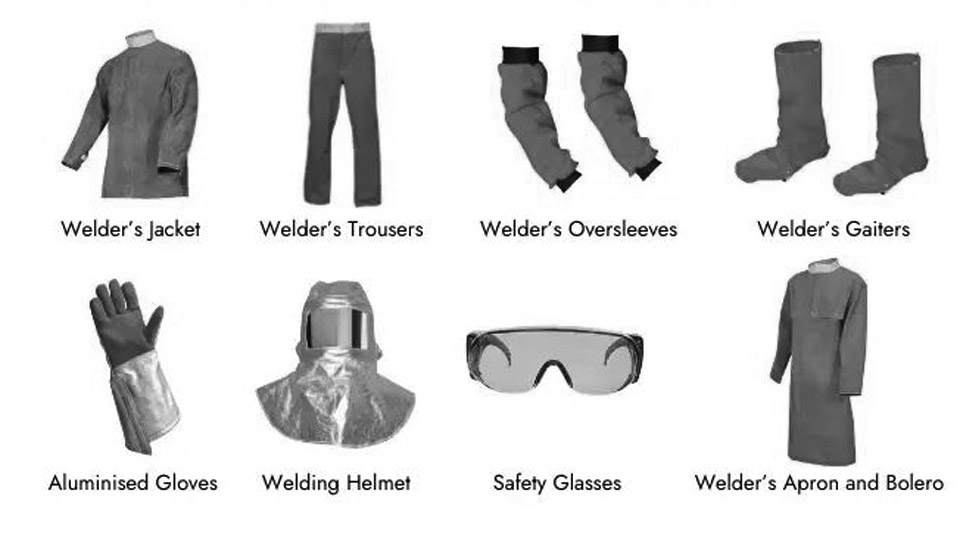If you’re working in welding or even thinking about it as a career, you really need to understand the health risks, especially when it comes to welding fumes.
I’ve spent years around welding, and while the sparks and molten metal may seem like the obvious dangers, it’s the invisible stuff floating in the air that often does the most harm.
I’ve had conversations with fellow welders who brushed it off in the beginning, only to face health issues later. Let’s talk about it clearly and honestly.

Image by ipsystemsusa
When you strike that arc, cut with a torch, or heat up metal, fumes rise. It might not seem like much at first, but what’s in that smoke is what makes welding fumes truly dangerous.
These fumes are more than just a nuisance—they carry toxic metals, gases, and other particles that can affect your lungs, brain, and even your entire body over time.
And unfortunately, many folks don’t realize how serious this is until they’ve already been affected. That’s why I’m sharing what I’ve learned, because protecting your health while doing the work you love should never be optional.
What Are Welding Fumes Made Of?
Welding fumes aren’t just “smoke” from the metal melting. They’re a complex mix of fine, solid particles and gases produced during the welding process. What you’re actually breathing in depends on several things:
- The type of metal being welded
- The kind of welding process used (MIG, TIG, Stick, etc.)
- The electrode or filler material
- Any surface coatings or paints on the metal
- The shielding gases used
Here’s a quick look at some of the common substances found in welding fumes:
| Substance | Where It’s Found | Health Concerns |
|---|---|---|
| Manganese | Steel and low-alloy welding rods | Neurological problems, similar to Parkinson’s |
| Chromium VI | Stainless steel | Carcinogenic, damages lungs |
| Nickel | Stainless steel and some alloys | Lung issues, cancer risk |
| Zinc | Galvanized steel | Metal fume fever (flu-like symptoms) |
| Lead | Painted or coated surfaces | Kidney damage, brain issues |
| Aluminum | Some alloys and coatings | Respiratory irritation |
| Carbon monoxide | Poorly ventilated areas | Can lead to unconsciousness or death |
These fumes are made up of particles that are small enough to go deep into your lungs and even enter your bloodstream. That’s what makes them so dangerous.
Short-Term Effects of Welding Fumes
When I first started welding, I remember coming home with a sore throat, irritated eyes, and a strange metallic taste in my mouth. That’s actually your body reacting to the fumes—even just a short exposure can cause noticeable effects.
Some common short-term symptoms include:
- Eye, nose, and throat irritation
- Dizziness or lightheadedness
- Nausea or stomach upset
- Headaches
- Fatigue
- Coughing or chest tightness
- Temporary flu-like symptoms, especially after welding galvanized steel (known as metal fume fever)
Metal fume fever is surprisingly common. It’s usually caused by inhaling zinc oxide, and symptoms can show up within a few hours of exposure. It feels like a bad cold or flu—chills, fever, muscle aches, and fatigue.
The weird thing is, many welders develop a kind of temporary immunity to it, which can make it easy to ignore. It’s still a clear sign that your body’s reacting to something toxic.
Long-Term Effects of Welding Fumes
This is where things get serious. Long-term exposure to welding fumes can lead to chronic and sometimes irreversible health issues. These effects build up quietly over months or years, which is why many welders don’t make the connection right away.
Some of the most concerning long-term health risks include:
- Lung damage and chronic bronchitis – The tiny particles from welding fumes can scar your lungs over time.
- Asthma – Even if you never had asthma before, you could develop it through continued exposure.
- Lung cancer – Especially if you work with stainless steel or coated metals.
- Neurological damage – Manganese exposure has been linked to Parkinson-like symptoms, including tremors and movement issues.
- Kidney damage – Some of the heavy metals like cadmium and lead can affect your kidneys.
- Reproductive issues – Prolonged exposure to fumes has also been linked to fertility issues in both men and women.
One thing I’ve noticed over the years is that these health problems don’t always hit you like a truck. They creep in slowly—maybe a little more fatigue, a persistent cough, trouble focusing.
You chalk it up to getting older or working long hours. But in reality, your body might be waving a red flag about the air you’re breathing every day.
Which Welding Processes Create the Most Fumes?
Not all welding methods create the same amount of fumes. Some are worse than others. Here’s what I’ve personally observed and what the research backs up:
- Flux-Cored Arc Welding (FCAW) – Produces a lot of fumes due to the flux inside the wire.
- Shielded Metal Arc Welding (SMAW or Stick Welding) – High fume levels, especially with coated electrodes.
- Gas Metal Arc Welding (GMAW or MIG Welding) – Moderate to high fumes, depending on materials and wire.
- Gas Tungsten Arc Welding (GTAW or TIG Welding) – Lowest fume levels, but not fume-free.
- Oxy-fuel Welding and Cutting – Also produces fumes, especially when cutting through coated or painted metals.
If you’re doing stainless steel or galvanized steel work, you’re dealing with more hazardous fumes no matter the process.
How Ventilation Plays a Role
Ventilation is one of your best defenses. Whether you’re working in a big shop or a small garage, the goal is to keep the air moving and dilute the fumes before you breathe them in.
There are three main types of ventilation:
- Natural Ventilation – Open doors, windows, or fans. Better than nothing, but not always reliable.
- Local Exhaust Ventilation (LEV) – Uses hoods or ducts near the weld to suck up fumes at the source. This is what I recommend most.
- General (Dilution) Ventilation – Moves air throughout the entire room or building, but doesn’t target the fumes directly.
From personal experience, local exhaust systems make the biggest difference. You can actually see the smoke getting pulled away, which gives you peace of mind. Plus, it helps protect your coworkers too.
Personal Protective Equipment (PPE) and Respirators
Sometimes, ventilation isn’t enough—especially in tight spaces or high-fume jobs. That’s where personal protective gear comes in.
Here are the essentials I always recommend:
- Welding helmet with a proper lens – Protects your eyes from sparks and UV radiation, but doesn’t stop fumes.
- Respirators – This is the big one. A good respirator with P100 filters or a powered air-purifying respirator (PAPR) can make a huge difference.
- Gloves, jackets, and safety glasses – These are more for fire and impact protection but still part of the full safety picture.
If you ever feel hesitant about wearing a respirator, remember—your lungs don’t get a second chance. I’ve met welders who wished they’d started using one much sooner.
Welding Indoors vs Outdoors
This one might seem obvious, but it’s worth pointing out. Outdoor welding lets fumes disperse much more easily than indoor work. If you’re welding in a garage or basement without good airflow, those fumes can quickly build up to dangerous levels.
That said, even outdoor work can be risky if the wind blows the fumes right back into your face. Positioning matters. I always try to work upwind, so the fumes move away from my breathing zone.
What Employers and Shops Should Be Doing
If you’re working for a company, they’re legally responsible for providing a safe work environment. That includes:
- Conducting air quality testing
- Offering proper PPE
- Installing ventilation systems
- Training workers about the risks
If you’re self-employed or working in a small shop, you’ve got to take that responsibility on yourself. It might cost a bit upfront, but it’s worth it in the long run. Your health is priceless.
Welding Fume Safety Tips You Can Start Today
From one welder to another, here are some simple actions you can take:
- Always read the safety data sheet (SDS) for the materials you’re using
- Avoid welding coated, painted, or oily metals unless properly prepped
- Use fume extraction at the source whenever possible
- Wear the right respirator—especially with stainless steel or galvanized materials
- Take breaks and step outside for fresh air during long jobs
- Keep your work area clean and uncluttered to improve airflow
- Don’t eat or drink in the welding area—fumes can settle on surfaces
- Schedule regular health checkups if you weld often
Conclusion
So, how dangerous are welding fumes? The truth is—they can be very dangerous if you don’t take them seriously. There’s a lot you can do to protect yourself. I’ve seen the consequences of ignoring welding fumes, and I’ve also seen the difference that good habits and proper safety gear can make.
You don’t have to stop welding to stay healthy. You just have to weld smart. Think of it this way—every time you strike that arc, ask yourself if you’ve done enough to protect your lungs, your brain, and your future. Because once you lose your health, it’s hard to get it back.
Stay safe out there, and never hesitate to make your own well-being the top priority. You’ve got a lot of great work ahead of you, and the world needs welders who are strong, skilled, and healthy.
Frequently Asked Questions
What are welding fumes?
Welding fumes are tiny particles and gases released when metal is melted or cut. They contain substances like manganese, chromium, and zinc that can be harmful when inhaled.
Can welding fumes make you sick?
Yes, welding fumes can cause both short-term symptoms like headaches and nausea, and long-term illnesses such as lung damage or neurological problems.
Is one type of welding safer than others?
TIG welding generally produces fewer fumes, but even it isn’t completely safe without good ventilation. Stick and flux-core welding produce the most fumes.
Do I need a respirator when welding?
Yes, especially when working indoors, in tight spaces, or with stainless steel and galvanized metals. A P100 respirator or a PAPR is highly recommended.
What is metal fume fever?
Metal fume fever is a flu-like illness caused by inhaling zinc oxide fumes, usually from welding galvanized steel. Symptoms include chills, fever, and fatigue.
Can welding fumes cause cancer?
Yes, prolonged exposure to certain fumes, like hexavalent chromium and nickel, has been linked to lung cancer and other serious conditions.
Is outdoor welding safer for fume exposure?
Welding outdoors allows fumes to disperse more easily, but you still need to be cautious about wind direction and personal protection.
How can I tell if my workshop has enough ventilation?
If fumes linger in the air or your workspace smells smoky even after you stop welding, ventilation is likely insufficient. Adding local exhaust systems can help.
Does wearing a welding helmet protect from fumes?
No, welding helmets protect your eyes and face but do not filter out harmful fumes. You still need a respirator for proper protection.


